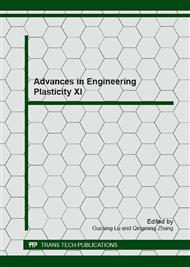p.346
p.353
p.357
p.361
p.365
p.369
p.373
p.377
p.381
Development of Buffer Stopper Using Progressive Compression Process for Crash Energy Absorption of a Railway Vehicle
Abstract:
A railway buffer stopper is a crash energy absorbing device which is installed at the end of rail lines in order to prevent derailment. To stop a train which cannot otherwise stop at the rail end due to some kind of trouble, this device should be installed in a railway station or depot where the rail line finishes. Friction type buffer stoppers have been installed at railway stations in most European countries. These devices can absorb the crash energy of the train by using the friction between a friction element and the rail when the train crashes into the buffer stopper. This paper proposes a new concept for the buffer stopper which can replace the friction type buffer stopper. More economical and effective buffer stopper can be suggested by using a progressive compression process. When the train crashes into the new type buffer stopper, a metal strip installed at the rail is progressively compressed and absorbs the kinetic energy of the train through its own plastic deformation. The feasibility of the buffer stopper using the progressive compression process is first investigated using numerical analysis and then the design and concept for the new system are suggested by a parametric study. The design of the progressive compression type has been verified by a series of experiments.
Info:
Periodical:
Pages:
365-368
Citation:
Online since:
January 2013
Authors:
Price:
Сopyright:
© 2013 Trans Tech Publications Ltd. All Rights Reserved
Share:
Citation:


